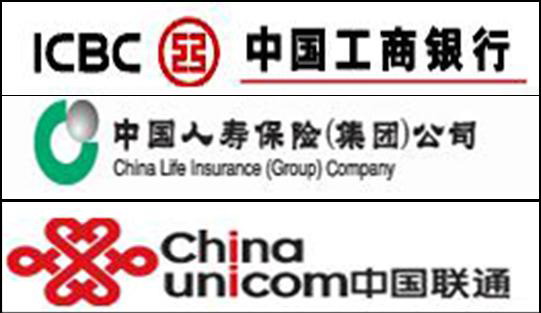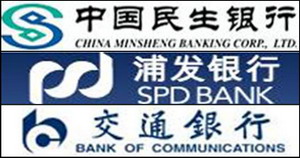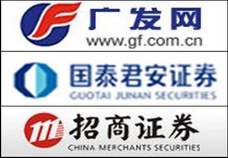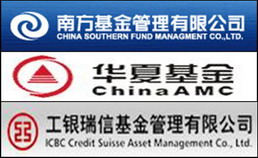The Chinese stock market has handed in beautiful scorecard for 2007. It was one of the most profitable markets globally-- total market valuation reached 30 trillion yuan (4.1 trillion dollars) by December 17th, ranking it fourth after the US, Japan and the UK. Publicly listed Chinese companies--for which average market value rose by 235% in 2007 and now stand at 21.2 billion yuan (2.9 billion dollars)--have been hailed by Chinese as role models for the country's businesses. As the year 2008 begins, it is time for them to hand in their annual reports to anxious investors.
It is in this spirit that the EO has put together a Performance Summary 2007 to take stock of major components in the Chinese capital markets--publicly listed companies, securities companies, funds and banks--and explore possible trends for 2008. [Editors' note: the original series appeared in print in our February 4th issue, see bottom for links to Chinese.)
Publicly Listed Companies Performance Summary 2007:
Performance Summary 2007:
Based on public market data and companies' annual reports, the estimated weighted average stock earnings for 2007, compared with 2006,have increased by 40% to 0.33 yuan. An unprecedented flurry of IPOs in 2007 contributed greatly to this growth.
Most Profitable Companies:
In the third quarter of 2007, the net profits of all listed companies totaled 604.01 billion yuan. The top 20 most profitable listed companies contribute 61.49% of the total net profits of all listed companies combined. The percentage of profits concentrated in the hands of a few has increased from the previous year's 56.35%. Top profitable companies with significant growth include CITIC Securities, SAIC Motor, China Ping An Group, Industrial and Commercial Bank of China, Wuhan Iron and Steel Company, China Yangtze Power Corporation, China Unicom, China Life, Bank of Communications, China Merchants Bank, and China CITIC Bank.
Highest Losses Companies:
In the third quarter of 2007, 196 listed companies reported losses, with total losses reported at the Shanghai and Shenzhen Stock exchanges during this period were 12.41 billion yuan. The 20 companies with the highest losses include ST Wanjie, ST Canghua and ST Xintian. Listed companies from the chemical engineering and electronics sectors have fared especially poorly.
The Banking Sector Performance Summary 2007:
Performance Summary 2007:
Unlike many listed companies that registered surging stock prices from capital restructuring and high investment returns,banks performed well largely due to sound business development that bolstered market confidence. Macro-economic polices in 2007 helped the banks thrive, as China's central bank hiked interest rates numerous times which then led to higher interest margins enjoyed by them. So as credit saw double-digit growth, interest margins increased, intermediary services expanded, and the costs of providing credit lowered--all of these contributed to surging profit margins for banks.
Beside this, the banking sector paid more attention to non-interest related incomes, including various processing fees and commission-based services. In some banks, such as the Shanghai Pudong Development Bank, intermediary services was the fastest growing business area.
All the above contributed to astounding growth in net profit for banks, with some recording more than a 100% jump in 2007 projected net profit compared to 2006--well illustrated by the China Merchants Bank, Shenzhen Development Bank, Industrial Bank Corporation, and CITIC Bank. Banks with net profit growth above 60% included China Minsheng Banking Corporation, Bank of Communications, Shanghai Pudong Development Bank, and Industrial and Commercial Bank of China.
Projection 2008:
Market analysts forecast a slowdown in the banking sector's growth rate due to economic uncertainties both global and domestic. Looking back at 2007, investors constantly worried over policies like reserves rate adjustments and interest rate hikes, but those concerns did not prevent commercial banks from realizing strong growth. In 2008, however, anticipation of tighter controls on credit has led analysts to project stable yet moderate growth in banks' profit margins--around 40%.
Six factors--steady or a slight increase in net interest margins; a continuous drop in the cost of providing credit; the fast expansion of intermediary services; a gradual decline in the incomes-expenses ratio; tax burden reduction resulting from standardization of the taxation system; and slower but more sound credit growth--will be the main drivers for the banking sector this year according to the analysis of the Guotai Junan Securities Research Institute.
Securities Companies
 Performance Summary 2007:
Performance Summary 2007:
Based on annual reports and public market data, 47 securities traders (excluding listed ones) garnered a total of 79.36 billion yuan worth of net profits in 2007, up a stunning 373% over the previous year.
Although it came under pressure for alleged insider trading, Guangfa Securities still topped the rank with a net profit of 8.18 billion yuan. Guotai Jun'an Securities came second with 7.6 billion yuan, while Guosen Securities occupied the third spot with 7.56 billion yuan.
Although China International Capital Corporation had the most underwriting business revenue, it didn't ascend to the top ten due to low commission income from having too few branches. Several small and medium-size companies, such as Rising Securities and China Lion Securities performed extremely well too, with over 10-times net profit growth compared to the previous year. No securities traders suffered losses in 2007, as compared to six companies in the red in 2006.
Projection 2008:
Overall performance and growth of securities firms are expected to decline sharply this year, according to Chi Xiaohui, market analyst of Galaxy Securities. She projects the market to become more volatile, with increasing risks for asset management. Companies operating securities brokerage and investment banking portfolios may expect healthy growth equivalent to last year; but market uncertainty can make it more difficult for self-operated securities traders to stay profitable.
Last year, securities companies pocketed 20 billion yuan through equity warrants issuance, but Chi cautions that if the companies failed to introduce cover warrants this year, revenue generated would drop drastically.
In anticipation of market restrictions to ease gradually, stiffer competition is expected among securities companies in 2008, according to a report by Guoyuan Securities. The report projects a widening gap between companies due to differing capacity in business expansion, innovation, and capitalization.
Finally, a rush to list on the market is expected among securities companies this year. Ten firms, including China Merchants, Huatai and Everbright Securities, have already disclosed details of their IPO preparation. As the regulatory authority encourages securities companies to form group corporations, some have taken steps to expand and buy over other fund management, futures trading, and finance companies as part of their risk diversification plan.
Fund Management Companies Performance Summary 2007:
Performance Summary 2007:
Some analysts estimate that the total management fee income of 58 fund companies approached 31.6 billion yuan, half of which can be attributed to the top ten largest fund companies.
Moreover, some fund companies' incomes from investment in enterprise annuity, social security funds, consulting services and self-operated businesses are also increasing.
The management fees of QDII (Qualified Domestic Institutional Investor) products have been nearly 20% higher than the management fees of other kind of funds. The four QDII products issued towards the end of 2007, with management fees worth 1.8% of investment asset value, generated an income totalling 0.494 billion yuan.. But considering the high costs, whether QDII will increase the fund company's income remains to be seen.
New Profit Channels:
The management fees come mainly from two sources: relatively low fixed management fees, and performance commissions, the combined total of which cannot exceed 1.2 percent of the total asset's net value, according to regulation.
Public data shows that in 2007 new enterprise annuities amounted to 40 billion yuan, bringing the total to nearly 130 billion yuan. According to this, related management fees can contribute 1.56 billion yuan to fund companies' income.
Zheng Wenxiang, manager of annuity operations for Southern Securities, predicts that enterprise annuities will account for 30 percent of Chinese fund companies' total assets within the next five to ten years.
Grey Income:
At the end of February 2006, the Securities Regulatory Commission (SRC) announced that fund companies could directly provide consulting services to their targeted clients without reporting to the SRC. In 2007, about ten fund companies began cooperative operations with Chinese banks, acting as advisors for managing clients' asset and wealth. Sources say that this income has become the main source of fund companies' grey income in 2007.
Projection 2008:
Sources say that in 2008, it won't be easier for fund companies to make money than it was in 2007. Many fund companies are taking positive measures to diversify their businesses.
For example, ICBC Credit Suisse Asset Management Company is planning to develop enterprise annuities, asset and wealth management and investment consulting services. By now, many fund companies have set up clients' asset and wealth management departments.
According to regulation, the commissions for asset and wealth management services can be no higher than 20 percent of the asset's net profits. Li Haipeng, manager of such services in Southern Securities Company, echoes the opinion that the clients' asset and wealth management services will become the important source of fund companies' profit, but it still depends on how the industry develops its scope and the structure of management fees.
For Further Reading:
The China Securities Regulatory Commission (CSRC) has released China Capital Market Development Report in late January 2008: http://www.csrc.gov.cn/n575458/n4001948/n4002030/n9434750.files/n9434747.pdf
Original article related to Securities Companies in [Chinese]; Public Listed Companies in [Chinese]; Funds in[Chinese]; Banking Sector in [Chinese].
Translated and compiled by English edition staff
- What China's Storm Might Change | 2008-02-14
- Day of Reckoning for China's Sovereign Fund | 2008-01-31
- East Meets West at Central Bank | 2008-01-09
- Tracking Down 'Missing' Public Assets | 2008-01-07
- Tax Reform in 2008 | 2008-01-02











